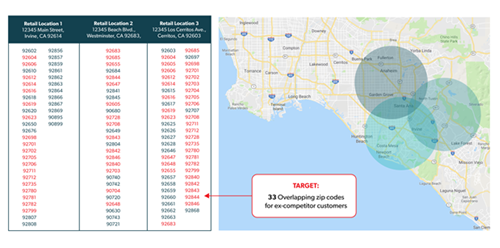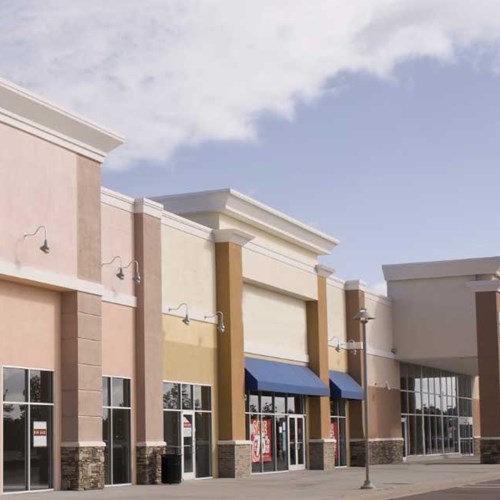Battling the ‘Retail Apocalypse’ – Targeting the Right Store Trading Zone
What’s happening?
The perceived story of declining traffic to brick and mortar retail stores has gone from bad to worse in the last few years. While online sales continue to show consistent growth, sales and foot traffic to many major store brand locations have been extremely variable, with customer traffic to high-profile brands and large malls declining. This is not a simple, one-size-fits-all story – that online sales is cannibalizing physical locations. Online sales as a percentage of total sales vary hugely from 2-3% of grocery to the vast majority of books, games and other easily-delivered items.
For decades, one of the go-to traditional strategies to drive in-store retail traffic is to identify a trading zone around a physical store location and deliver a direct mail or newspaper store circular to customers within that trading zone. It has been proven that sending a customized message to potential customers within travel distance of a store increases traffic.
However, exactly how to target, deliver and measure delivery within a trading zone is changing, empowered by new data, new technology and new media. This is an opportunity for retail brands to become more efficient, and at the same time, more accurate in their retail messaging, creating a far better ROI than relying solely on the traditional direct mail drops of the past.
The ability for digital media to deliver a geo-targeted message to customized audience segments in precisely targeted trading zones is a familiar tactic to many of today’s retailers. Geo-location data is becoming more accurate and will continue to improve, even in the era of increased privacy and GDPR. We can deliver customizable messages to devices within an established proximity of a location, ensuring that the message is both timely and relevant. Even better are improving ways we can measure these exposures, tie them back to physical purchase via attribution and measure true online to offline ROI.
But there is less attention paid to, arguably, an even more important element of targeting – what any specific store or location’s actual trading zone should be.
Where available, clients are using their own CRM data to estimate trading zones, but typically that is translated to an average applied to every store and it is that average that is used to target geo-located media. While CRM data is a great base to start with to identify trading zones, it is biased towards store loyalists rather than occasional shoppers. We believe CRM data should be augmented by other means to obtain a clearer understanding of a single location’s true customer base. CRM data alone will not identify which competitive store locations customers are most likely to visit.
At USIM, we have partnered with the largest mobile-only survey panel provider, MFour, and leveraged their data to map out location-by-location trading zones called in a system called PurViewTM, giving us some fascinating and very actionable insights.
– While the average trading zone for the typical retail client does not vary much between different marketing regions, there are significant differences for individual locations
– Trading zone variations have shown variances (for a restaurant client for example) of 3 miles to 14 miles within the same marketing region
– We were able to map the competitive set of restaurants to specific locations enabling unique message and offer insights
This was a significant change from the existing set of geo-location targeting standards that were being used – a set 5-mile trading zone around every store. While this might have been correct in some cases and potentially correct on average (although it turned to be an underestimate of the average), it was wrong for almost every specific location, allowing the client to gain significant efficiencies and better targeting of their media spending.
PurViewTM example

Data visualization of custom trading area based on 33 overlapping zip codes
Summary
While the new reality of physical retail is still evolving, driving customers to store locations will always be a critical concern. It is increasingly important to deliver more effective and efficient media to achieve retail traffic. Location targeting is a critical element of making that media work smarter and harder. With new tools like PurViewTM, USIM is harnessing the full potential of available data to create scalable media programs and deliver custom plans that respond to specific location profiles and truly drive retail traffic.
